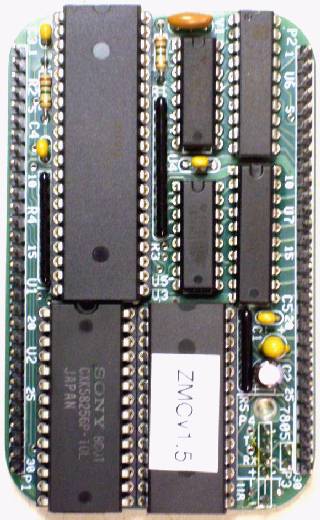
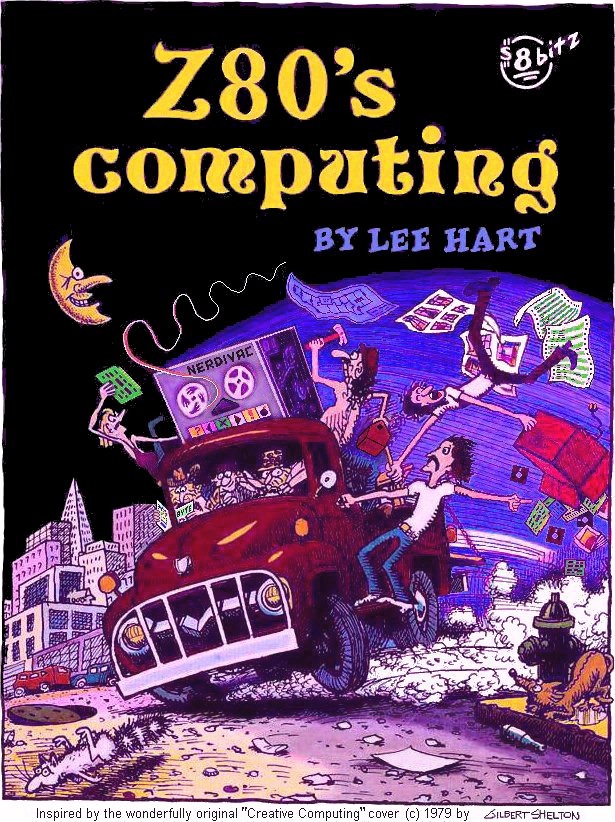
The microcomputer is an incredible, revolutionary invention. Like the electric light, the printing press, and the wheel, it has changed the world. Without microcomputers, the internet, and perhaps even "life as we know it" would not be possible!
Once upon a time, computers were all built by huge corporations, and programmed by the faceless army of a software priesthood. Names like IBM, DEC, and NCR dominated the scene. Computers only did things their way, for their benefit. The only things users could do with them were the same things that a million other users did. What were touted as "breakthroughs" were often minor improvements on the Same Old Things.
Then in the 1970's, the microprocessor was invented. Big companies viewed it as a primitive toy that could lure away customers and thus threaten their computing monopoly. But renegade groups of hackers saw it differently. Yes, it was a toy; but also a playground for unparallelled creativity, and a tool of unprecedented power. They sensed that the microcoprocessor was the next great invention that would change the world. The "lights" came on, the "wheels" started turning, and the "presses" quickly started churning out printed circuit boards that would revolutionize the world of computing.
At last, computer enthusiasts could have their own computer! They could build it, modify it, and even program it themselves! These were truly "personal" computers -- long before IBM co-opted the name for their bureaucratic beige boxes that were anything but personal.
These early microcomputers were pretty crude; like bicycles compared to sports cars. But that's a good thing! A bicycle is vastly cheaper, and much easier to learn. Yet it can still take you anywhere a car can go, if you're not in a hurry. And, a bicycle can take you to places that no car can ever go (with better scenery, too)!
The hobbyists that built them were often beginners and outsiders that didn't know how computing was "supposed" to be done. They made their own rules, invented their own solutions, and came up with entirely new applications that were impossible with traditional computers. In the process, they wound up completely re-inventing the entire computing industry.
This is the story of one such group of visionary hackers, and the computer they made. The story is fictional; but the computer is real! You can buy it, build it, and program it yourself just like the pioneers. And perhaps, invent your own completely new and imaginative uses for these marvelous little machines!
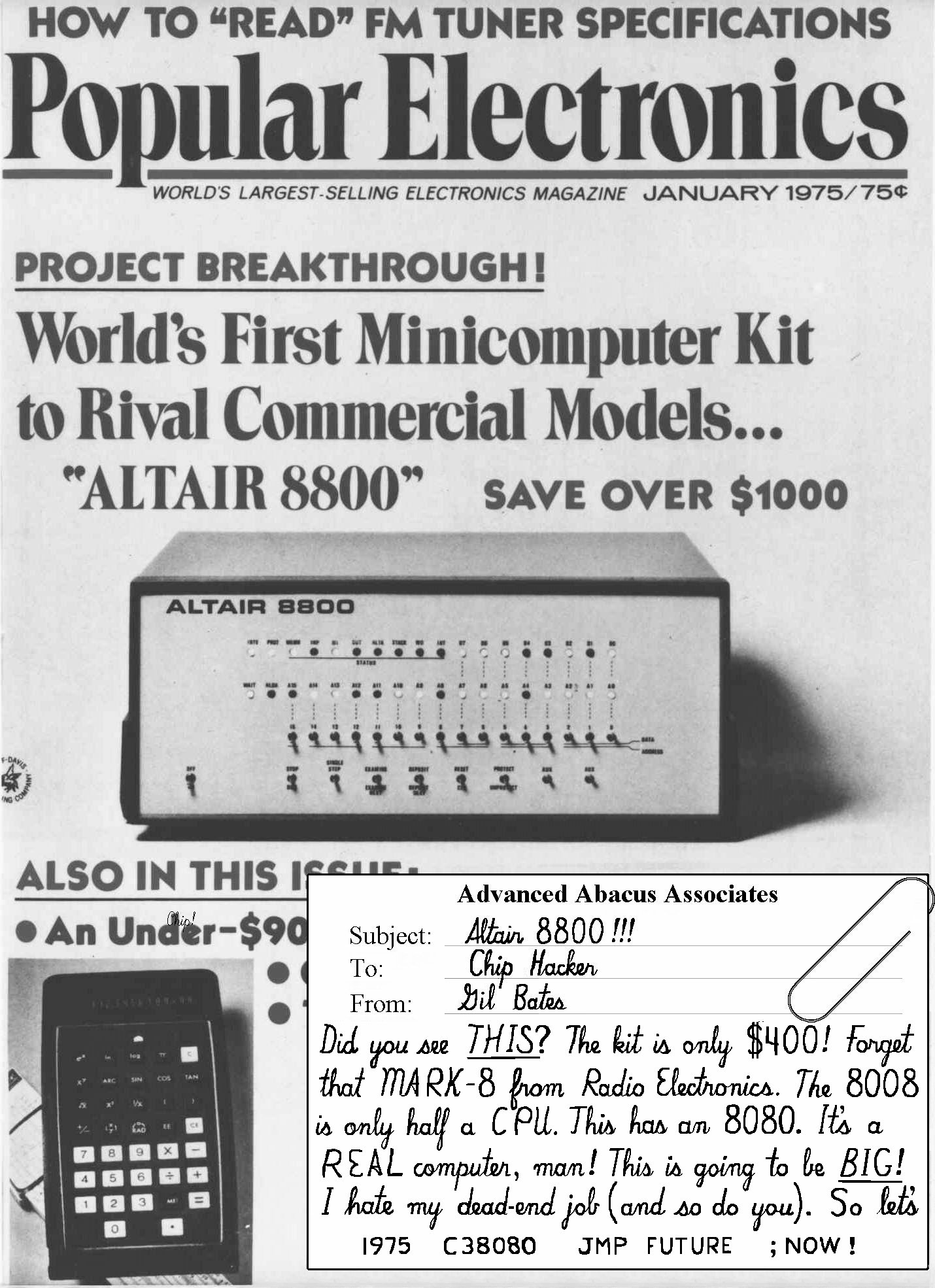
Our story begins in January of 1975. Hardware engineer Chip Hacker has been struggling to get his Mark-8 microcomputer with its 8008 CPU to work. His visionary friend Gil Bates alerts him to the introduction of the MITS Altair 8800 with its 8080 CPU, and says to "Forget the Mark-8. This is going to be BIG!" And off they go, on an adventure to found the Itty Bitty Micro Company and build the world's first pocket computer. Along the way, they join forces with Wiz Wireman (who can build anything), Richie C. "Crash" Kernigan (codemeister extraordinaire), and Tracy Weaver (who can pack a PCB tighter than a holiday suitcase).
It's a success! They manage to cram a classic 1980's microcomputer into an Altoids tin, complete with a Z80 CPU, memory, serial I/O, and an advanced front panel with keypad and LED display.
But disaster struck. Enroute to their big debut at the West Coast Computer Faire, the prototype was lost. It remained lost for 40 years, until it was recently discovered. Now it can be yours! A kit has been found with all the PC boards, parts, and documentation they produced along the way. You can build it yourself, as a "reproduction" of a computer that could have been made in 1980, if only things had worked out differently.
The Membership Card is a complete computer that fits in an Altoids tin. Inspired by classic 8-bit computers like the Altair 8800 and Heathkit H8, it is thoroughly documented and easy to build, with big parts, big pads, and big traces and spaces. It uses only generic parts common in the 1980s (and still available today) -- no custom parts, and no surface mount. It's fully self-contained: You don't need PCs, Windows, megabyte compilers, or secret software to use it. Now you can learn about computers right from the ground up, and really understand how they work!
It comes as a two-board set. The Z80 Membership Card itself is a stand-alone single-board computer that can "power up" your projects, like the Parallax BASIC Stamps or Arduino microcomputers. But you need a way to program it, and of course some kind of input and output "shield" to put it to work.
The Z80 Front Panel is the first such card. It plugs onto the Z80 Membership Card to add a hex keypad, 7-digit hex display, piezoelectric beeper, timer, and TTL/RS-232 serial port. The ZMC program in EPROM uses the front panel to provide a sophisticated machine-level monitor that works with either the keypad/LED or a serial terminal (or a PC pretending to be a terminal).
The Z80-SIO Serial/RAM/SD-card is the second I/O board. It plugs onto the Z80 Membership Card to add a real UART, additional memory up to 512K bytes, and a micro SD-card to simulate disk drives. The CP/M-80 operating system is included, so you can have a complete classic CP/M computer in your pocket!
Z80 Membership Card -------------->

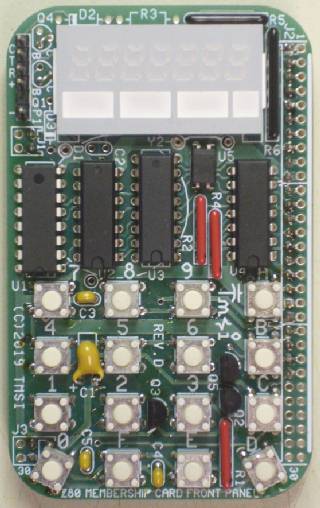
A unique feature of the ZMC monitor is that it remains active even while your program is executing. For example, it can continuously display the contents of any memory location, I/O port, or CPU register as your program is running, so you can see when something is modifying it.
The serial port is interrupt driven, and sends/receives data at 9600 baud in full duplex. That's pretty amazing when you realize it's done without a UART. :-) You can plug it into an RS-232 terminal, or a PC running a terminal emulation program like HyperTerm. The ZMC monitor then receives commands from the PC keyboard, and sends its results to the PC screen. You can also upload and download data and programs as simple ASCII text, Intel HEX files, or XMODEM formats.
The Z80 Membership Card and Front Panel Card are available in kit form for just $80 plus shipping. A Z80 for $80 -- get it? :-) It comes with a "retro" manual with real schematics and parts lists, which we think is a lot of fun. Bare boards are available in case you'd rather build it with your own parts. Click on the links below and take a look! HINT: To order more than one item, use the ORDER FORM
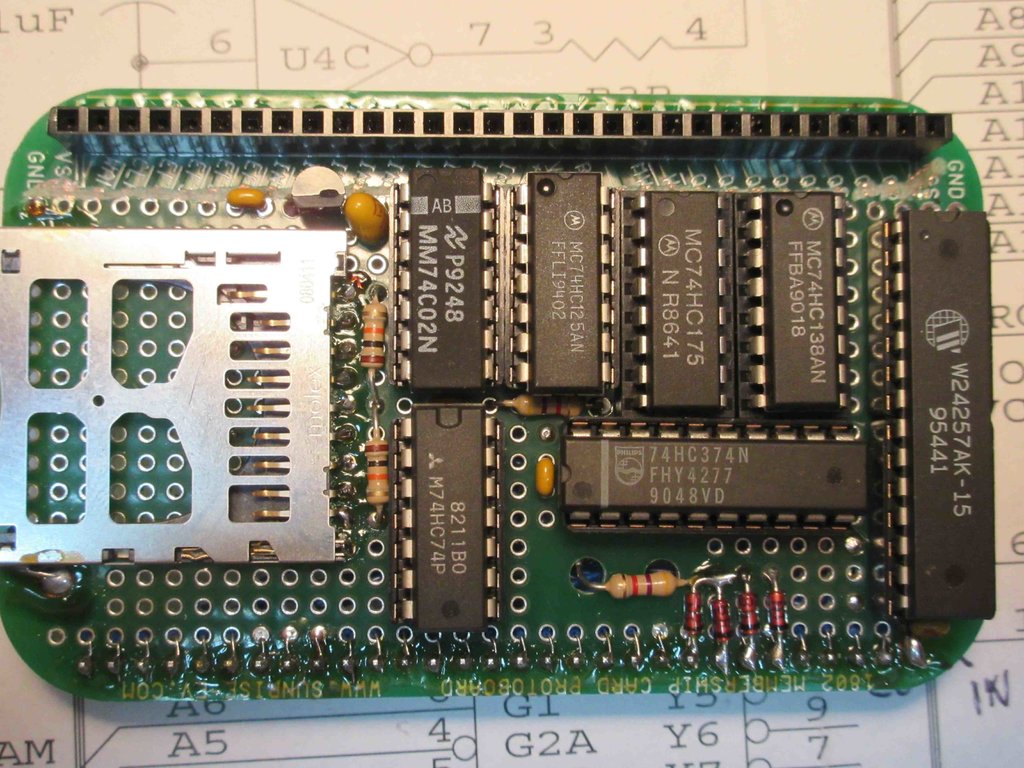
You say you want to build your own Membership Card from scratch? Or make your own expansion boards that plug right in? We had to do exactly that ourselves to develop the Membership Card! So a third board is available; a Protoboard that has a grid of 0.060" pads with 0.040" holes on 0.1" centers, as well as holes and pads for the bus connectors, labeled to match the Z80 and 8080 (Altaid 8800) Membership Cards (they both have the same bus). This is no cheap phenolic crackerboard; it's a high quality US-made FR4 glass-epoxy board with precision plated-through holes. It is precisely the same size as the other boards, so it fits in an Altoids case too.
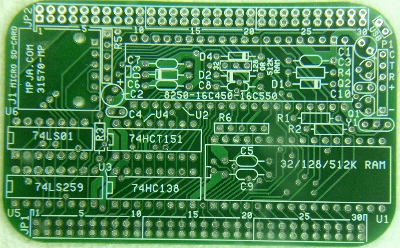
We used the protoboard to develop the next board in Z80 Membership Card family. The Z80-SIO card adds bank-switchable RAM up to 512K, a real UART for faster serial I/O, and an SD-card interface to provide "disk" storage. Now you can run the CP/M-80 operating system on the Z80 Membership Card!
Yes, it's tightly packed -- in fact, you'll notice a few parts hiding under the two big ICs. But I was able to stick to my old-fashioned design rules and avoid tiny traces, spaces, and pads. That makes it a lot easier for my tired old eyes and shaky old hands to build.
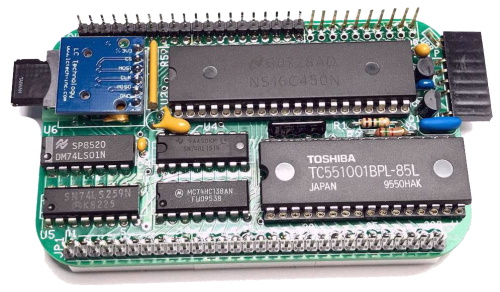
The ZMCv1.5 Monitor program (on the Z80 Membership card) looks for the file Z80MC_GO.HEX on an SD-card. This is the "boot track" for the CP/M-80 v2.2 operating system. If found, the monitor loads and executes it to boot CP/M. If this file is not found, the Monitor simply continues to run from ROM as usual.
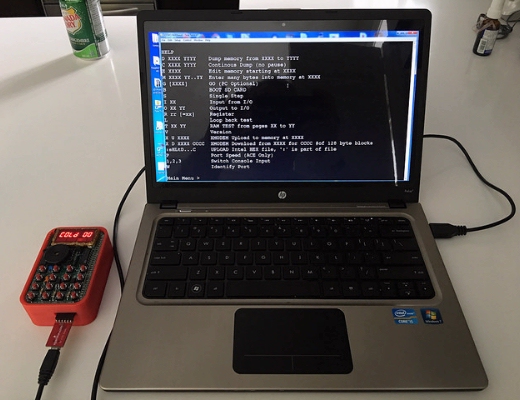
The Monitor supports any combination: You can run the Z80-CPU card alone, or with the Front Panel, or with the Z80-SIO card, or all three. A single card or 2-card stack fits in an Altoids tin; but you'll need a taller case for a 3-card stack. Here's a picture of Walter Miraglia's Z80MC with the Front Panel and Z80-SIO card, connected and powered from his laptop's USB port. It also shows off his cool 3D printed case. If you'd like one, his design files are on Thingiverse here. You can order one through the linked suppliers. Rich Cini says he got one for $18.
CP/M reads and writes to disk image files on the SD-card. These are ordinary DOS FAT16 files that you put there with your PC. You can "mount" any 4 files at a time as CP/M's A: to D: disks. Disk image files can emulate anything from a little "floppy disk" to an 8 Mbyte "hard disk". The default size emulates 8" 250K floppy disks. The CP/M Disk Explorer is a Windows drag-n-drop file manager to transfer CP/M files between these images and the normal DOS file system on a PC.
The Z80-SIO kit is $10 for a bare board, and $50 for a complete kit (plus shipping and handling). To order it with the Z80 Membership Card, use the ORDER FORM to combine shipping and reduce your price.
Builders should be experienced with SD-cards, CP/M, and in configuring terminal programs to accurately model the vintage terminals that CP/M programs expect. Less experienced builders may want to wait until we have a more "Heathkit"-like manual to guide them through the process.
Bugs: The Z80MC Front Panel uses RST7 for its hardware interrupts. It turns out that CP/M's DDT (and the similar SID and ZSID) debuggers also use RST7 for their "breakpoint" interrupt. Thus, these programs won't work with the Z80MC Front Panel.
Digital Research's Application Note 07 "Changing the Restart Number in DDT" fixes this by changing the breakpoint from RST7 to RST6. A version of DDT.COM with this patch (named DDT-v6.com) is now on the DISK-A.BIN image in the SD-CARD.zip file (below).
Here are links to the files and documentation needed to assemble and use the Z80-SIO card. Be sure your Z80-CPU card has the latest ZMCv1.5 monitor program to access the Z80-SIO card. Stay in touch, as we're still improving it!
The Z80 Membership Card Microcomputer, © 2013-2025 by TMSI c/o Lee A. Hart. Created 6/18/2015. Last update 1/10/2025.
Go to TOP ........
Go to HOME ........
Questions? Comments? Email me for details.
Web hosting provided by my good friend and brilliant computerist Jon "Sheer" Pullen.